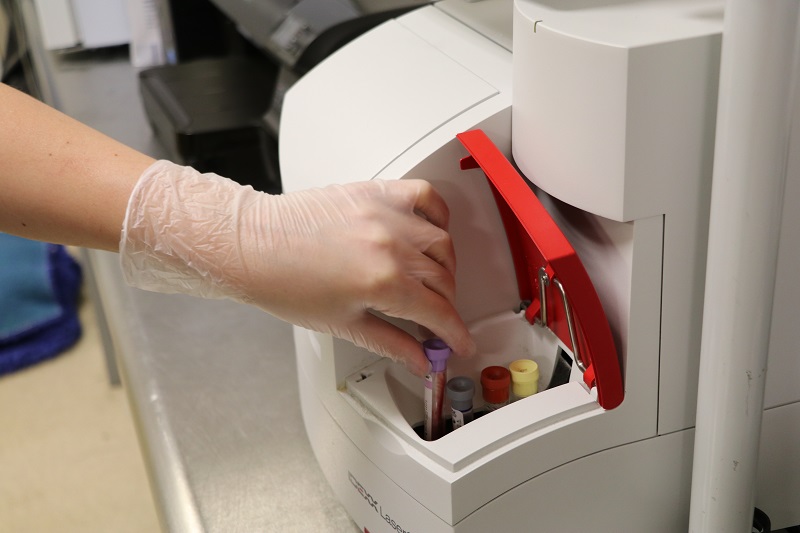Benchtop Analyser vs Expert Opinion
Clinical Connections – Summer 2019
Laureen Peters and Emma Holmes, Lecturers in Clinical Pathology
We’re all fond of our in-house, benchtop haematology and biochemistry analysers, particularly for that critical patient who presents out-of-hours. But where are the limitations of the practice lab, and when is the expertise of a clinical pathologist indispensable?
Today’s in-house/benchtop analysers are very sophisticated machines, which are generally relied upon to provide rapid and accurate haematologic and biochemical analysis. This can be the case with the majority of samples, especially for clinically ‘normal’ animals. However, this is often not the situation in which they are used, which can cause issues for the analysers. Knowing at what stage to rely on your in-house analyser or to ‘send out’ your sample for analysis and review will save both time and money for your client.
First and foremost, an analyser can only deliver accurate results if maintenance and quality control are routinely and correctly performed. We therefore recommend to run control samples regularly (at least monthly, depending on analyser and frequency of use) and don’t hesitate to call in the manufacturer’s support if you suspect your analyser has become a random number generator. At commercial or referral level, the quality control aspect is built into the daily/batch procedure, by experienced personnel, which removes the worry of trying to assess the machine, reagents or sample for problems.You know that the results generated can be taken as measured.
Secondly, it is important to take error flags seriously. In the majority of cases these flags are indicating an abnormality within the sample, such as clotting or interferences (e.g. haemolysis, lipaemia or icterus) rather than an error with the analyser itself. This is an indication that further investigation is needed. Analysis of a fresh blood smear and measurement of PCV, alongside the automated haemogram is crucial, because even the most sophisticated haematology analyser cannot accurately count platelets when they are clumped, and cannot perform an accurate leukocyte differential count if there is marked neutrophil toxicity, left shift, or atypical cells.

At commercial or referral level, blood smear review by an experienced haematology technician or clinical pathologist is done as part of the routine offering, adding further information to help arrive at a diagnosis, which often in practice there is not the time to do. Other pathological features that can be seen on a blood smear, but which are invariably missed by the haematology analyser include abnormal erythrocyte morphology (e.g. spherocytes, schistocytes, acanthocytes) and rarely, infectious organisms (e.g. Mycoplasma spp or Babesia spp.).
Some important issues may occur in the pre-analytical phase, such as use of the wrong anticoagulant, inadequate mixing, filling, or storage of a sample, interferences through altered plasma colour (such as haemolysis, lipaemia, icterus), or in vitro leakage (e.g. potassium, phosphate) or consumption (e.g. glucose) of certain analytes. In such cases, it may require the expertise of a clinical pathologist for thorough troubleshooting, and occasionally comparison of your in- house results to measurements in a reference laboratory to rule out hardware malfunction.
Results also need to be interpreted with the patient in mind, to ensure we treat the patient’s clinical disease rather than the blood results. Some common physiological breed and age-specific variations are widely known, such as elevated Hct and creatinine concentration in greyhounds, macrothrombocytopaenia in Cavalier King Charles spaniels, or mild anaemia and lymphocytosis in young animals. However, less common physiologic deviations,
such as macrocytosis in poodles and microcytosis in Akitas and other Japanese breeds, tend to remain niche knowledge acquired during specialist training of clinical pathologists.
Therefore, whilst we fully support the use of in-house laboratory testing, we recommend to interpret results critically, and if in doubt contact the laboratory of your choice for expert clinical pathology advice or review.
